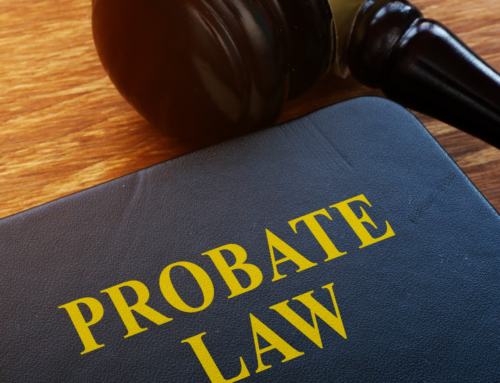May 2019
Perhaps you’ve invested in an apartment building as a source of retirement income. Maybe you inherited a second home from a relative, and are debating whether renting the property is worth the trouble. No matter the size of your property, or the specifics of your goals or circumstances, the most important thing you can do to protect your investment is to codify an agreement with your tenants by means of a well-crafted (and legally enforceable!) written lease. This is your initial guide:
What Is a Residential Lease?
A lease is a contract, like any other; albeit one with specific statutory rules and obligations built into it. A residential lease is an agreement between a property owner and a tenant that codifies the term of the tenant’s right to possession of the property and the value the tenant will confer to the landlord in exchange for that right (usually monthly rent). Generally speaking, any agreement – written or oral – to accept money in exchange for the right of occupancy creates a tenancy under California law. The details vary based on what the agreement actually says (if it’s a written document) and by how the parties act (by, say, tendering and accepting rent on a given date).
Because the law imposes certain duties on landlords, those duties will be read into a lease whether they’re explicitly stated or not (or whether the lease is written or oral). For instance, any agreement to rent property for residential purposes comes with an implied warranty of habitability. The landlord has a contractual duty to maintain their rental property in a condition fit for human habitation regardless of whether the lease explicitly says so. Lease provisions that contradict the law (by, e.g., attempting to require a prospective tenant to waive rights that are not waivable by statute) are generally unenforceable, and – depending on the details – may expose the landlord to civil liability.
Why do I Need a Written Lease?
It may be tempting – especially for non-professional landlords and those who plan to rent only to friends or close acquaintances – to keep their rental agreements informal. This is understandable, but potentially problematic. Even well-meaning parties can run into unexpected difficulties, and without a written lease the friendship suffers too.
The written lease exists to provide a roadmap to avoid – or at least mitigate – conflict between landlord and tenant. The lease provides the landlord with an opportunity to explicitly codify the range of concerns that may come up. More importantly, it provides the landlord with an opportunity to build remedies into his or her agreement. What happens if the tenant is late on their rent? What does “late” mean? Three days past the due date? Five? Do you want to charge a fee for late rent? How much? To what extent does the tenant have access to common areas? Do you want to place any limitations on how they use those common areas? Do you want to create an ongoing (i.e. “month-to-month”) lease, or a fixed term lease that automatically ends in a year?
The more detailed the lease is, the better equipped you will be to remedy any disputes that may arise both as to what you intended to agree to, and what to do if one of the parties fails to comply with what you agreed to.
What Can’t I Put into a Lease?
The previous section may have given you the impression that you should throw everything, including the proverbial kitchen sink, into your lease. The caveat is that there are a number of provisions you might want to add to a lease that may seem reasonable to you, but may not comply with the law. As discussed above, residential landlords have certain duties (e.g. provide a habitable premises), but they also have limitations on their right to unilaterally enter the property once it has been rented to residential tenants. It is also important to ensure that whatever provisions you do codify in your lease do not inadvertently run afoul of state or federal discrimination provisions (by, e.g., adding restrictions on use of outdoor common areas that impermissibly burden families with children, or pet restrictions that fail to reasonably accommodate persons with disabilities by not allowing service animals). Finally, the law of contracts places limitations on the circumstances and size of financial penalties you can charge for a tenant’s failure to abide by some lease provisions. A $50 fee for a late rent payment on a $2,500/mo. lease is likely enforceable. A $500 fee is not.
In Conclusion…
A well-crafted lease is the most efficient tool you have as a property owner to ensure that your investment runs smoothly and without undue liability. Whether you are a long-term landlord looking to ensure that your existing agreement is up to date with current law and precedent, or a first-time property owner hoping to make the most of a new investment, the guidelines in this article are a start. If you have questions, the attorneys at Fauver, Large, Archbald & Spray have the experience and knowledge you need to ensure that you get the best value for your property, and great peace of mind.
Chris M. de la Vega, Attorney
(Direct) 805.966.7599
DISCLAIMER: This Advisor is one of a series of business, real estate, employment, estate planning and tax bulletins prepared by the attorneys at Fauver, Large, Archbald & Spray, LLP. This Advisor is not exhaustive, nor is it legal advice. You should discuss your particular situation with us or with your own attorney. Our legal representation is only undertaken through a written engagement letter and not by the distribution or use of this Advisor.





